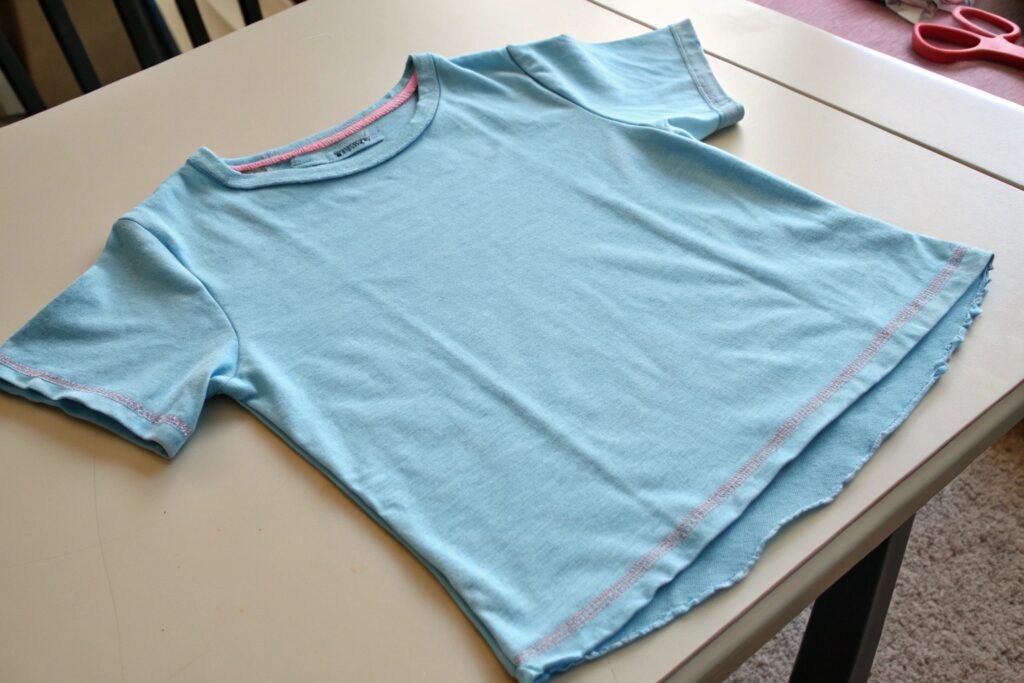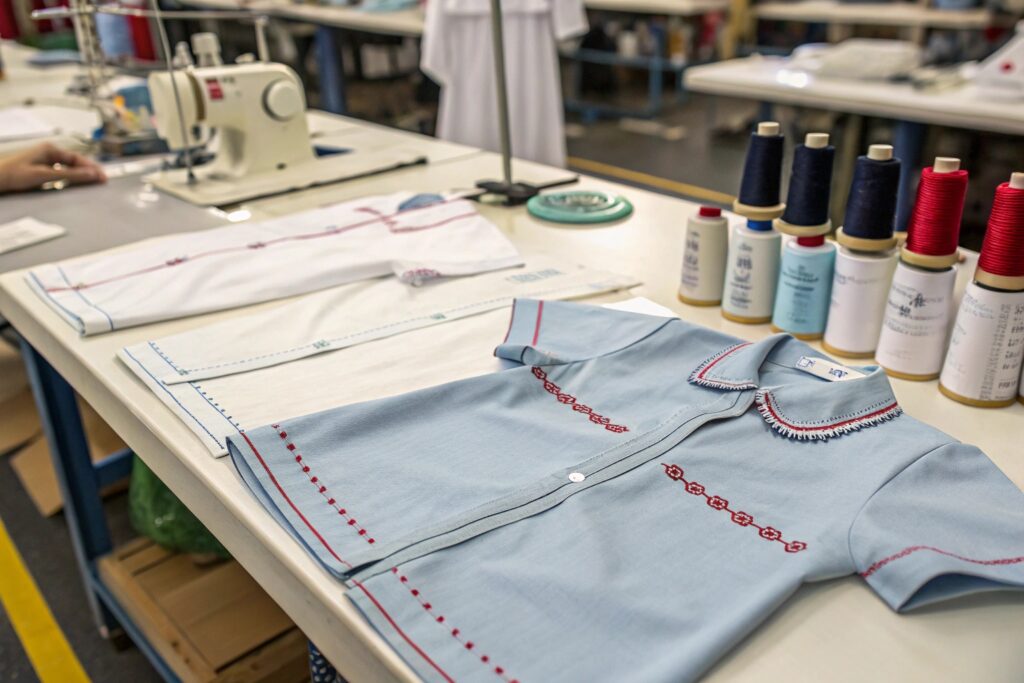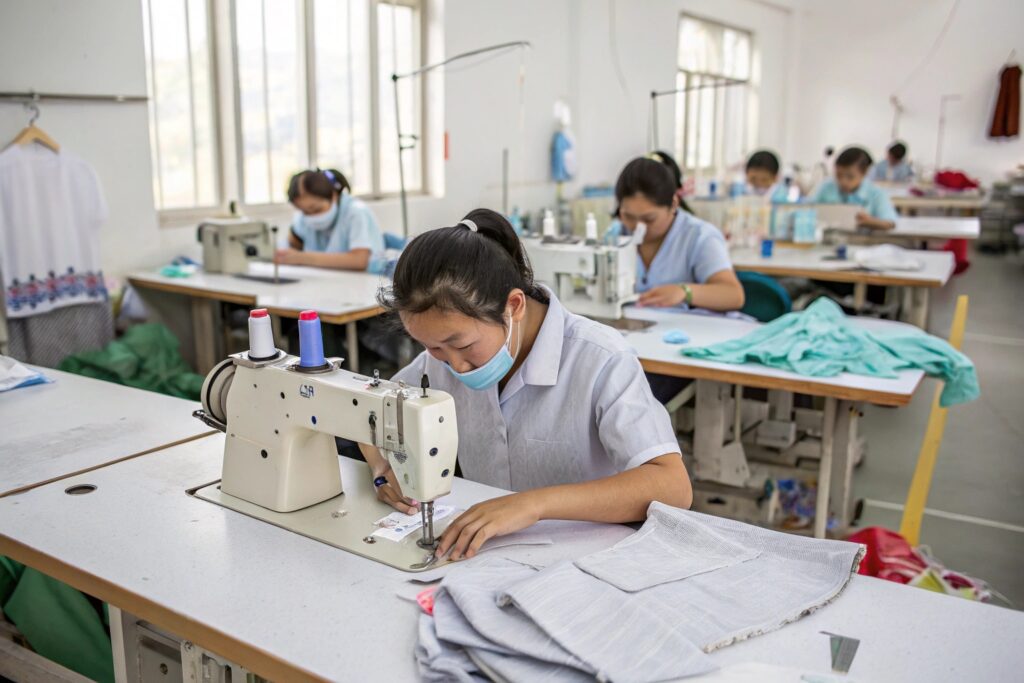You can have the best fabric, the trendiest design—but if the stitching is poor, the garment fails.
Sewing is the foundation of garment construction. It determines not only how long clothes last but also how well they fit, move, and sell. In apparel manufacturing, sewing isn’t just a step—it’s the core of quality.
In this article, I’ll walk you through how skilled sewing impacts every part of clothing production, why it matters in sustainable fashion, and the stitching standards every brand should demand.
How Sewing Skills Impact Garment Quality and Fit
Ever returned a shirt because the seams were twisting? That’s not fabric—it’s sewing gone wrong.
Precise sewing directly affects garment durability, shape retention, and comfort. Skilled stitching brings designs to life and ensures the final piece fits real bodies the way it was intended.

What specific problems happen when garments are poorly sewn?
Here’s a breakdown of the most common issues caused by poor stitching:
| Sewing Mistake | Visual/Functional Impact |
|---|---|
| Uneven stitch tension | Wavy hems, twisted seams |
| Inaccurate seam allowance | Skewed fit, misaligned panels |
| Loose stitches | Popping seams, holes after one wash |
| Over-trimming | Fraying edges, holes in stress points |
I once had a bulk order from a new factory that looked great during sampling. But 20% of the pants had side seams misaligned by over 1cm. We had to rework every piece. That’s when I decided to upgrade to Fumao’s sewing lines—our five production lines now include sewing professionals with 10+ years of experience.
How do expert sewing teams influence clothing fit for different body types?
Fit isn’t just about measurements—it’s about how fabric moves and settles on the body. Skilled sewers understand how certain seams affect drape. For example:
- Flatlock stitching lies flush on the skin—ideal for activewear.
- French seams create smooth interiors—great for silk or luxury pieces.
- Double-needle topstitching reinforces structure—vital for denim.
When I work with brands that struggle with returns due to poor fit, I always advise them to reevaluate their sewing techniques before redesigning the pattern.
Why Stitching Standards Matter in Mass Production
Mass production is fast—but if you sacrifice stitch quality, your returns and reworks multiply.
In high-volume manufacturing, following strict sewing standards ensures consistency, minimizes defect rates, and builds brand credibility over time.

What stitching standards do manufacturers follow to maintain consistent quality?
At Fumao, we apply industry-recognized benchmarks such as:
| Stitch Type | Application Area | Required SPI (Stitches/Inch) |
|---|---|---|
| Lockstitch | General assembly | 10–12 |
| Overlock | Seam edges | 8–10 |
| Coverstitch | Hems, activewear | 12–14 |
| Bar tack | Reinforcement points | 18–22 |
We also implement SOPs that ensure:
- Needle change schedules
- Seam allowance inspections
- Defect logging (puckering, skipped stitches, tension imbalance)
- Pre-shipment stitch audits
One of our brand partners once told me their defect rate dropped from 8% to below 1% after moving production to our factory—just because of better sewing SOPs.
Why do brands lose money when they skip stitching audits in bulk production?
Every bad seam costs more than just fabric:
- Reworking labor increases turnaround time
- Bad reviews hit online reputation
- Returns drive up logistics costs
- Damaged garments often can’t be resold
We once had a client cancel a $30K order with another vendor after receiving garments with visible skipped stitches. They turned to us to rework the product. Quality sewing saves more than money—it saves trust.
The Role of Skilled Sewing in Fashion Sustainability
Throwaway fashion often starts with weak seams and low-cost stitching.
Skilled sewing extends garment life, supports repairability, and reduces fashion waste—making it a cornerstone of sustainable fashion.

How does better sewing reduce clothing waste and improve product lifespan?
Poor stitching causes premature garment failure—even when the fabric is still intact. Here’s how quality sewing supports sustainability:
- Durability: Fewer garments thrown out due to broken seams
- Repairability: Strong, clean seams are easier to fix
- Fit retention: Well-sewn garments keep their shape longer
- Resale potential: Higher resale value on secondhand platforms
In 2024, we partnered with a European brand pushing circular fashion. They needed sewing strong enough to survive multiple lifecycles. We used reinforced flatlock and four-thread overlocks to ensure garments would pass 30+ washes without seam damage.
Why should sustainable brands invest in skilled sewing over automated shortcuts?
Sewing is labor-intensive, and many brands want to automate. But machines can’t yet replicate the human touch needed for:
- Aligning patterned fabrics
- Handling delicate materials
- Adjusting tension on curves and angles
That’s why we invest heavily in our sewing teams. They’re trained to spot inconsistencies, handle complex panels, and communicate issues before they become defects. Automation can assist—but it can’t replace intuition.
Key Sewing Techniques Every Apparel Brand Should Know
Most designers focus on fabric and cut—but knowing stitching techniques can improve product performance and aesthetics.
Understanding essential sewing methods helps brands design smarter, reduce production errors, and communicate clearly with manufacturers.

What are the most critical sewing techniques every brand should request in their tech packs?
Here’s a foundational list:
| Technique | Purpose | Common Uses |
|---|---|---|
| Overlock (Serger) | Edge finishing, fray prevention | Side seams, knitwear |
| Lockstitch | Basic seam construction | Shirts, dresses |
| Coverstitch | Stretch hems, decorative finish | Activewear, leggings |
| French Seam | Enclosed raw edges | Silk, chiffon |
| Flatlock | Smooth seams, low bulk | Underwear, athleticwear |
| Bar Tack | Reinforcement at stress points | Pockets, belt loops |
We include labeled stitch samples in every tech pack we send clients. This helps them visualize the end product and reduce confusion during development.
How can apparel brands upskill their team on sewing without becoming technical experts?
Knowledge boosts communication. Even a basic workshop on seams and stitch types empowers designers, merchandisers, and sourcing teams to:
- Make better design decisions
- Reduce revisions
- Catch errors early in sampling
At Fumao, we offer clients a downloadable “Stitch & Seam Guide” to train their team internally. It’s been one of the most requested assets in our B2B toolbox.
Conclusion
Sewing isn’t just a technical step—it’s the backbone of clothing production. Whether you care about durability, fit, or sustainability, it all starts with the stitch. Invest in sewing quality, and your brand will stand out.










